Average grass growth over the past week has been a meagre 4kg per day, whereas the 10-year average is 10kg for the same week. Soil temperatures have averaged around 2°C for the past week, which is between three and four degrees lower than normal.
For proper growth to resume, we need soil temperatures to rise, and for soil temperatures to rise we need air temperatures to rise.
Looking at the long-range forecast, air temperatures are set to increase, but there’s no indication of daytime temperatures exceeding 10°C any time soon and nights are still cold. This isn’t a good sign.
So what does this mean? Farmers who have hit their grazing targets to date (around 40% grazed) need to be thinking about delaying the start of the second round.
I would be conscious about slowing down the rotation and shoving out the start of the second round by five or six days to give grazed paddocks a chance to recover.
At the moment, there is only around 200 to 300kg on first-grazed paddocks. Watch farm cover closely and don’t let it go below 475kg at start of April.
For farmers who are behind on area grazed, and have a lot of grass on farm (most farmers) they should aim to get all the lower covers (about 30% of the farm) grazed over the next two weeks and then stretch out the remaining area until there is enough grass back on the land grazed first to start the second rotation.
Depending on growth rates, I would expect this to be around 10 April.
All farmers should have 70 units of nitrogen spread by 1 April. Those who spread some in January/February should go again now. Those who haven’t spread to date need to spread 40 or 50 units/acre now, in advance of milder weather.
Of course, you shouldn’t spread on waterlogged or snow-covered fields. Land is drier than expected and grazing has resumed on most free draining soils.
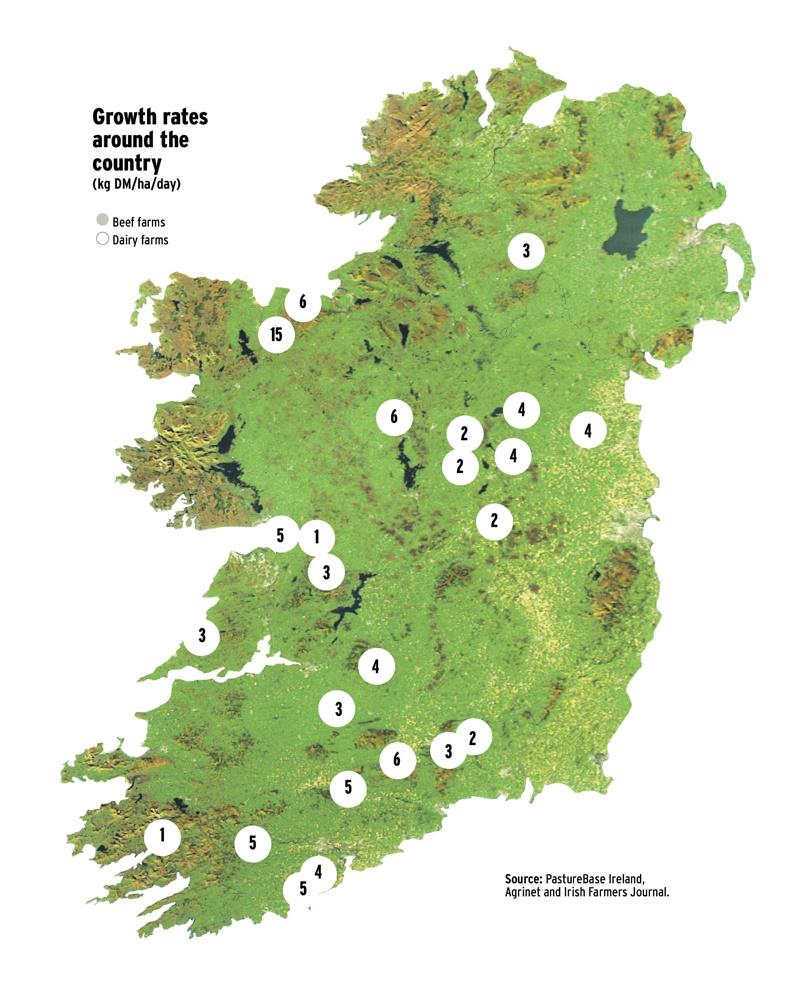
On/off grazing and grazing the drier parts of the farm is essential when resuming grazing.
Average growth rates are very low and farmers need to react now. Delay the start of the second round if necessary.Get more urea out now.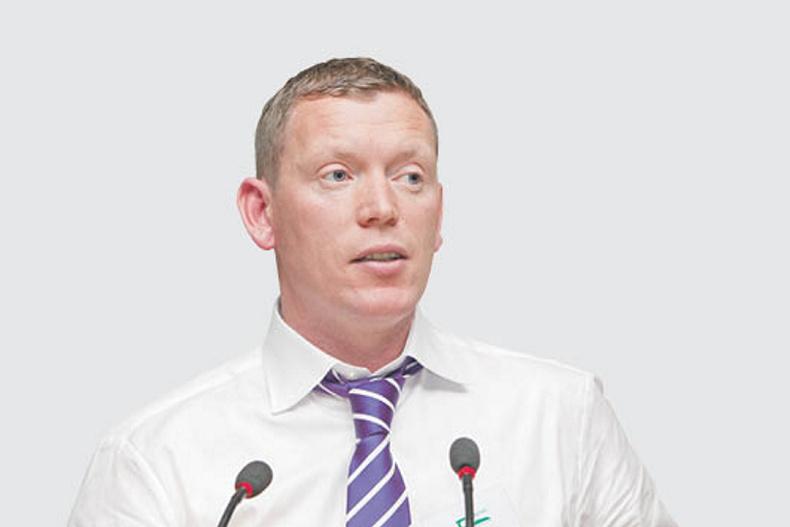
Teagasc Curtins Farm, Cork
Stocking rate (cows/ha) 2.76
Growth rate (kg/day) 7
Average farm cover (kg/ha) 614
Yield (l/cow/day) 20.7
Fat % 5.51
Protein % 3.51
Milk solids (kg/cow) 1.9
Supplement fed (kg/cow/day) 4
The snow here in Fermoy wasn’t as bad as in other spots. We only missed two days grazing and cows were back out again on Saturday. We have 39% grazed to date which is on target. We spread 40 units/acre of urea on Tuesday. The pre-grazing yield is around 1,100kg/ha and cows are getting 100sq metres each per day which is 11kg of grass and 4kg of meal in the parlour. Ground conditions and clean-outs are good so I’m happy enough with how things are going. We didn’t do a cover this week but I know growth is slow. 85% of the herd has calved.
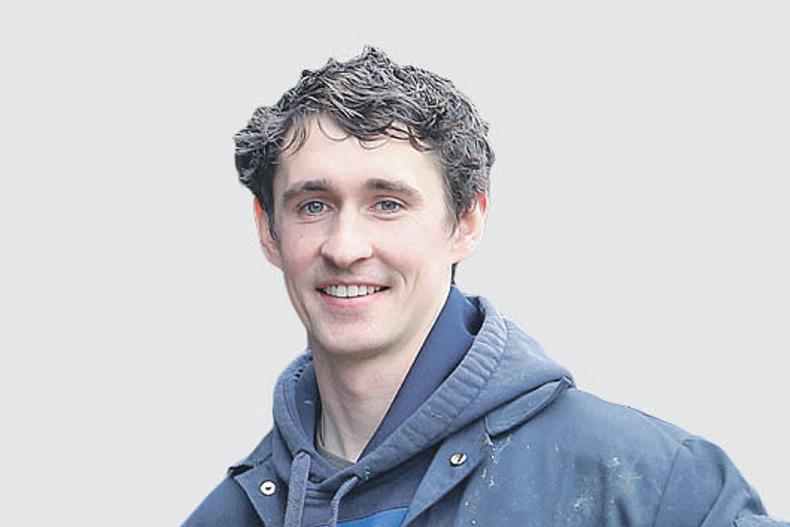
Teagasc Ballyhaise
Stocking rate (cows/ha) 2.9
Growth rate (kg/day) 7
Average farm cover (kg/ha) 723
Yield (l/cow/day) 21.5
Fat % 5.94
Protein % 3.58
Milk solids (kg/cow) 2.10
Supplement fed (kg/cow/day) 4
The snow wasn’t too bad here and we got away without too much hassle. We had blow-heaters in the parlour which kept that working. Cows went back out grazing on Tuesday morning and we are out morning and evening but we still bring them in at night.
Ground conditions are holding up pretty well. We have 62% of the herd calved with no issues to report. We milk recorded and have identified two high SCC cows which we paddle tested and treated. Bulling heifers went out to their own ground this week. They weigh 305kg on average.
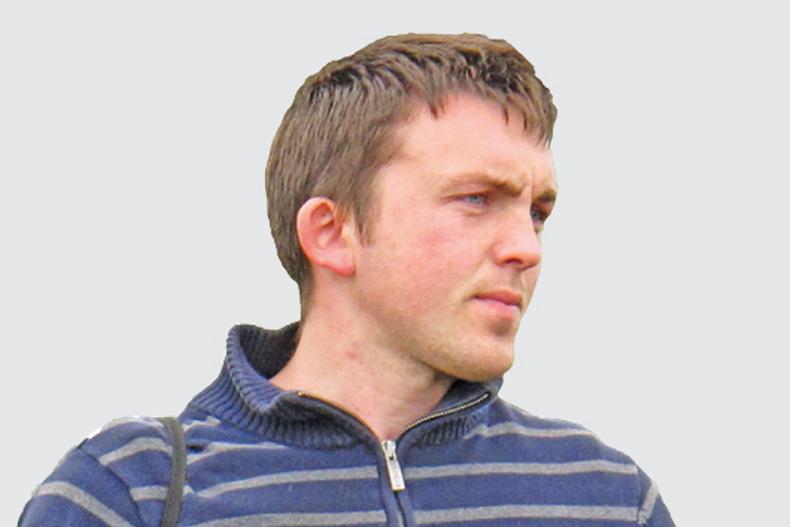
Teagasc Clonakilty
Stocking rate (cows/ha) 2.75
Growth rate (kg/day) 8
Average farm cover (kg/ha) 625
Yield (l/cow/day) 25.5
Fat % 4.80
Protein % 3.17
Milk solids (kg/cow) 2.09
Supplement fed (kg/cow/day) 5
The snow was bad enough here but the farm staff did a great job at keeping the show going. Cows were in full-time on silage and meal for seven days. With all the silage in the diet, protein has crashed. Farm cover in the grass and clover treatment is 625, when the budget is 780 so they are only going to get nine grazings this week and the grass only will get 11 grazings. We are going to stretch the round to last until 12 April as there is only 300 on first grazed paddock. It’s been a hard spring but we’ll get through it. BCS is holding up and cows are bulling away.

Kilimor, Co Galway
Stocking rate (cows/ha) 3.5
Growth rate (kg/day) 5
Average farm cover (kg/ha) 550
Yield (l/cow/day) 20
Fat % 4.80
Protein % 3.60
Milk solids (kg/cow) 1.73
Supplement fed (kg/cow/day) 6m 2s
We didn’t fare too bad in the snow. The cows were well fed on silage and they had access to a shed and a field. Growth and average farm cover is much lower than I’d like so I’ve increased the meal and we are feeding 1kg or 2kg of silage at milking time. I’ve 40% of the farm grazed which is on target. Cows are grazing a cover of 1,100kg/ha.
I’m going to graze as normal for a week more and then slow it down further. We are calving for a month now and have 60% calved to date. I’ve one bag/acre of urea out and waiting to go with the next round.
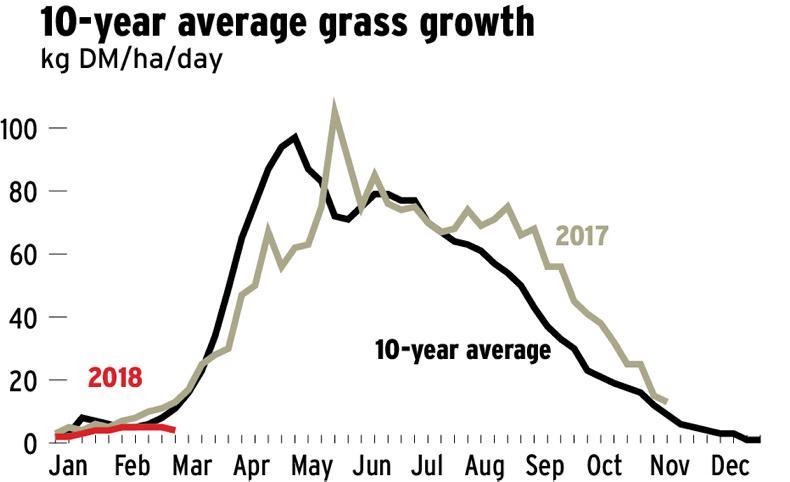
Read more
Surveying damage from the beast
Average grass growth over the past week has been a meagre 4kg per day, whereas the 10-year average is 10kg for the same week. Soil temperatures have averaged around 2°C for the past week, which is between three and four degrees lower than normal.
For proper growth to resume, we need soil temperatures to rise, and for soil temperatures to rise we need air temperatures to rise.
Looking at the long-range forecast, air temperatures are set to increase, but there’s no indication of daytime temperatures exceeding 10°C any time soon and nights are still cold. This isn’t a good sign.
So what does this mean? Farmers who have hit their grazing targets to date (around 40% grazed) need to be thinking about delaying the start of the second round.
I would be conscious about slowing down the rotation and shoving out the start of the second round by five or six days to give grazed paddocks a chance to recover.
At the moment, there is only around 200 to 300kg on first-grazed paddocks. Watch farm cover closely and don’t let it go below 475kg at start of April.
For farmers who are behind on area grazed, and have a lot of grass on farm (most farmers) they should aim to get all the lower covers (about 30% of the farm) grazed over the next two weeks and then stretch out the remaining area until there is enough grass back on the land grazed first to start the second rotation.
Depending on growth rates, I would expect this to be around 10 April.
All farmers should have 70 units of nitrogen spread by 1 April. Those who spread some in January/February should go again now. Those who haven’t spread to date need to spread 40 or 50 units/acre now, in advance of milder weather.
Of course, you shouldn’t spread on waterlogged or snow-covered fields. Land is drier than expected and grazing has resumed on most free draining soils.

On/off grazing and grazing the drier parts of the farm is essential when resuming grazing.
Average growth rates are very low and farmers need to react now. Delay the start of the second round if necessary.Get more urea out now.
Teagasc Curtins Farm, Cork
Stocking rate (cows/ha) 2.76
Growth rate (kg/day) 7
Average farm cover (kg/ha) 614
Yield (l/cow/day) 20.7
Fat % 5.51
Protein % 3.51
Milk solids (kg/cow) 1.9
Supplement fed (kg/cow/day) 4
The snow here in Fermoy wasn’t as bad as in other spots. We only missed two days grazing and cows were back out again on Saturday. We have 39% grazed to date which is on target. We spread 40 units/acre of urea on Tuesday. The pre-grazing yield is around 1,100kg/ha and cows are getting 100sq metres each per day which is 11kg of grass and 4kg of meal in the parlour. Ground conditions and clean-outs are good so I’m happy enough with how things are going. We didn’t do a cover this week but I know growth is slow. 85% of the herd has calved.

Teagasc Ballyhaise
Stocking rate (cows/ha) 2.9
Growth rate (kg/day) 7
Average farm cover (kg/ha) 723
Yield (l/cow/day) 21.5
Fat % 5.94
Protein % 3.58
Milk solids (kg/cow) 2.10
Supplement fed (kg/cow/day) 4
The snow wasn’t too bad here and we got away without too much hassle. We had blow-heaters in the parlour which kept that working. Cows went back out grazing on Tuesday morning and we are out morning and evening but we still bring them in at night.
Ground conditions are holding up pretty well. We have 62% of the herd calved with no issues to report. We milk recorded and have identified two high SCC cows which we paddle tested and treated. Bulling heifers went out to their own ground this week. They weigh 305kg on average.

Teagasc Clonakilty
Stocking rate (cows/ha) 2.75
Growth rate (kg/day) 8
Average farm cover (kg/ha) 625
Yield (l/cow/day) 25.5
Fat % 4.80
Protein % 3.17
Milk solids (kg/cow) 2.09
Supplement fed (kg/cow/day) 5
The snow was bad enough here but the farm staff did a great job at keeping the show going. Cows were in full-time on silage and meal for seven days. With all the silage in the diet, protein has crashed. Farm cover in the grass and clover treatment is 625, when the budget is 780 so they are only going to get nine grazings this week and the grass only will get 11 grazings. We are going to stretch the round to last until 12 April as there is only 300 on first grazed paddock. It’s been a hard spring but we’ll get through it. BCS is holding up and cows are bulling away.

Kilimor, Co Galway
Stocking rate (cows/ha) 3.5
Growth rate (kg/day) 5
Average farm cover (kg/ha) 550
Yield (l/cow/day) 20
Fat % 4.80
Protein % 3.60
Milk solids (kg/cow) 1.73
Supplement fed (kg/cow/day) 6m 2s
We didn’t fare too bad in the snow. The cows were well fed on silage and they had access to a shed and a field. Growth and average farm cover is much lower than I’d like so I’ve increased the meal and we are feeding 1kg or 2kg of silage at milking time. I’ve 40% of the farm grazed which is on target. Cows are grazing a cover of 1,100kg/ha.
I’m going to graze as normal for a week more and then slow it down further. We are calving for a month now and have 60% calved to date. I’ve one bag/acre of urea out and waiting to go with the next round.

Read more
Surveying damage from the beast












 This is a subscriber-only article
This is a subscriber-only article
















SHARING OPTIONS: